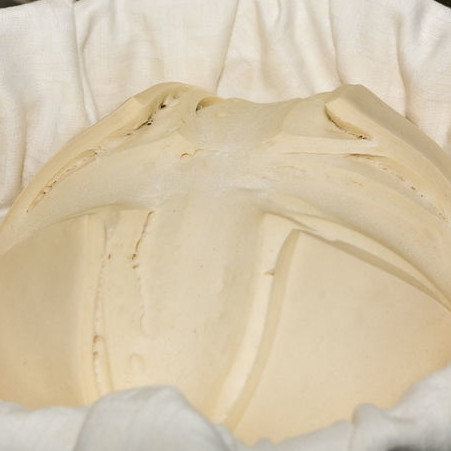
Lactic Acid
What is Lactic Acid?
Lactic acid is one of the most widely distributed acids in nature. It is a natural, weak, organic acid associated with milk. The acid is odorless and has a mild taste which does not compromise or mask other flavors. In fact, it enhances them. It is the natural sourdough bread acid and is found in a variety of foods including pickles, beer, buttermilk and cheese.
Properties of the acid:1
- Chemical formula: CH3CH(OH)CO2H
- Molecular Weight: 90.08
- I.U.P.A.C. name: 2 Hydroxypropionic acid
- Colorless, syrupy liquid or white to light yellow solid or powder
- Commonly available as 50-90% solution or recently as a powder (containing lactic acid and calcium lactate)
- Water soluble
Origin
When wheat flour is mixed with water, enzymes break down the dough to starches which the yeast and lactic acid bacteria, naturally present, can use to make acids and gases to leaven bread. Records indicate that around 4000 BC an Egyptian baker produced the first leavened sourdough bread.2
It was not until the 1850s that Louis Pasteur discovered the science behind leavened bread. The yeast that makes bread rise is Saccharomyces cerevisiae and the sourness is due to various lactobacilli bacteria which produce lactic and acetic acid.
Before Pasteur discovered the bacteria, Scheele discovered lactic acid in sour milk in 1780. In 1789, Lavoisier named this component “acide lactique,” the origin of the name lactic acid.3
Function
Lactic acid functions to:3
- Lower pH, increase acidity
- Enhance and add flavor
- Increase shelf life by Inhibiting mold
- As a substrate for producing dough conditioners Calcium and Sodium Stearoyl lactylate
- Bioavailability enhancer for mineral fortification
Nutrition
Lactic fermentation can increase the nutritional value for iron in foods.4 Examples include:
- Lactic acid decreases the content of phytate, which inhibits iron and zinc absorption.
- Lactic-fermented vegetables can enhance iron absorption from a meal.
Commercial Production
Lactic acid for food is produced either through chemical synthesis or fermentation. Commercial microbial fermentation utilizes homofermentative lactic acid bacteria that produce entirely lactic acid and not heterofermentative lactic acid bacteria which produce a blend of lactic acid, ethanol and CO2. Fermentation takes place in large tanks called fermenters or bioreactors and can be classified as either batch, fed batch, repeated batch or continuous fermentation.3
Application
The use of sourdough lactic acid fermentation to leaven bread is well established and results in bread with better texture, sensory qualities and shelf life. Improvements are due in part to lactic acid production during fermentation of the dough.
Studies have been conducted where 0.4% lactic acid is added directly to the dough. This has resulted in bread with:5
- Higher specific volume
- Decreased moisture content
- Lower pH
- Decreased hardness
- More yeast activity
- Reduced gas retention capability
FDA Regulations
In the United States, lactic acid is affirmed as a GRAS food substance for use in food with no limitation other than current Good Manufacturing Practices (GMP). Conditions of use include:
- Use as an antimicrobial agent, pH control agent, flavor enhancer, adjuvant, solvent or pickling/curing agent.
- Use in foods except infant food or formula.
- Meets the specifications of the Food Chemical Codex (FCC) 3rd edition. (21 C.F.R. § 184.1061 2018)
References
- FAO. Compendium of Food Additive Specifications,Volume 2. 1990, Rome, pp. 825.
- Wagner, S.”From Starter to Finish: Producing Sourdough Breads to Illustrate the Use of Industrial Microorganism”,The American Biology Teacher. 67:2. Feb 2005, pp 96.
- Wee,YJ, Kim JN, Ryu, HW. Biotechnological Production of Lactic Acid, Food Technol. Biotechnol. 44(2). 2006, pp. 163-172.
- Scheers, N, Rossander-Hulthen, L, Torsdottir, I, Sanberg, AS. “Increased iron bioavailability from lactic-fermented vegetables is likely an effect of promoting the formation of ferric iron (Fe(3+))” European journal of nutrition.55:1.2015, pp.373-82.
- Su,X, Wu, F, Zhang, Y, Chen F, Jin Z, Xu, X. “Effect of Organic Acids of Bread Quality Improvement”, Food Chemistry. 278, 2019, pp. 267-275.

